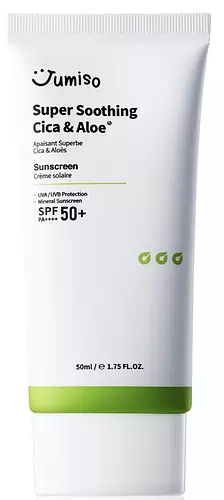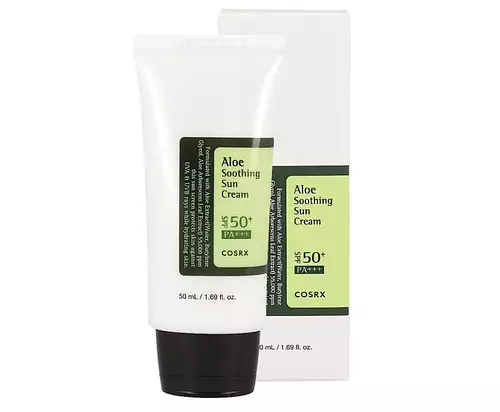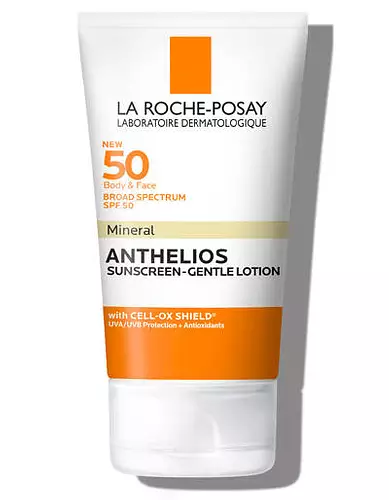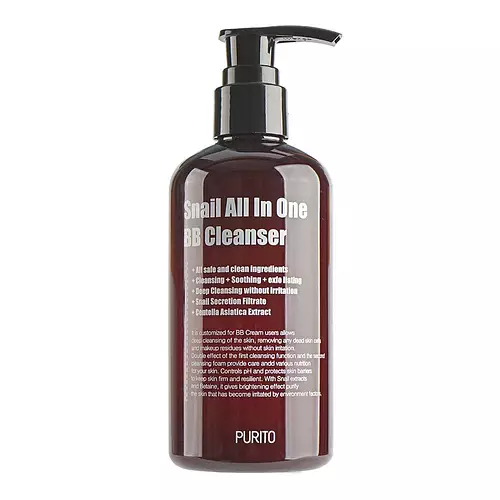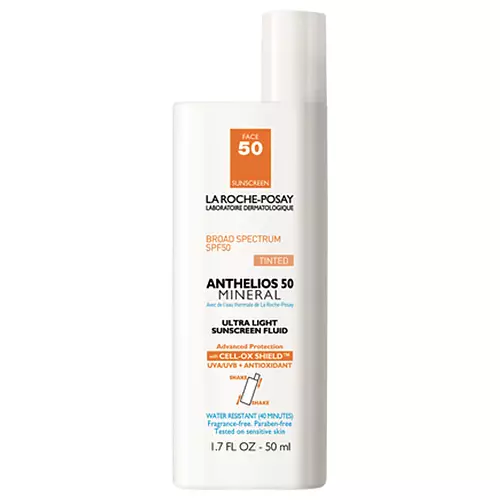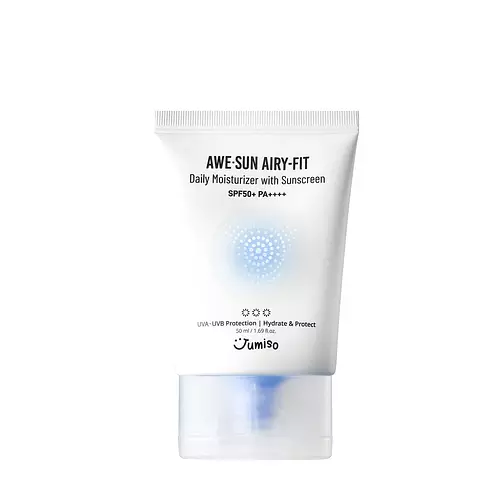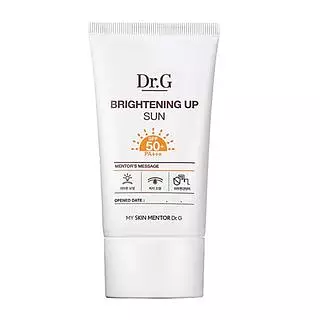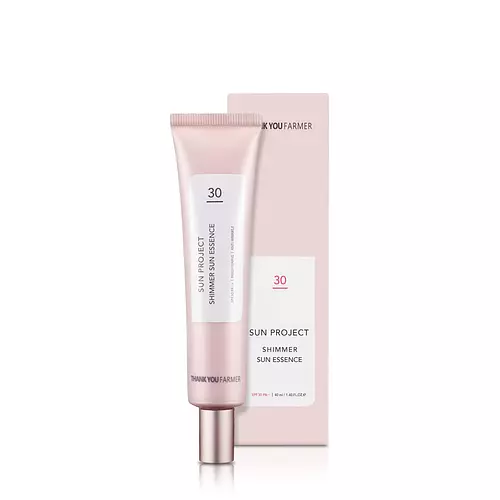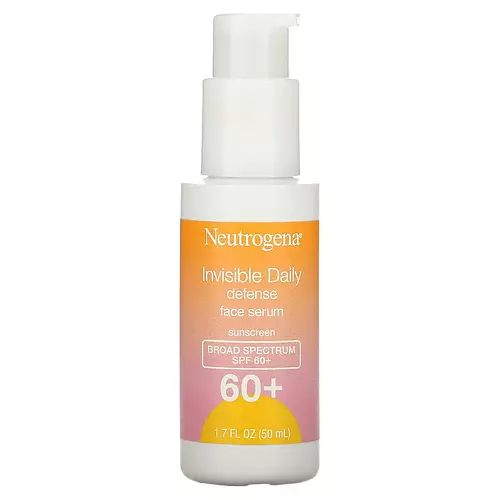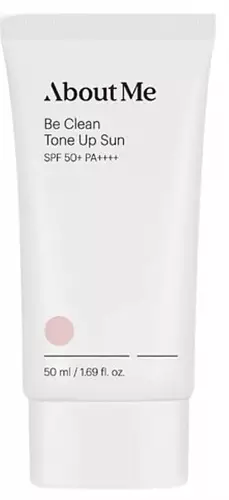Updated on September 03, 2023
Overview
What they are
These products are both cruelty-free sunscreens. They have a total of 5 ingredients in common
Cool Features
They both contain Vitamin E
Suited For
They're both likely to be good for brightening skin and sensitive skin
Free From
They both do not contain any oils or parabens
What's Inside
They both contain silicones
We independently verify ingredients, and our claims are backed by peer-reviewed research. Spot a product that needs an update? Let us know.
Ingredient Info
JUMISO Super Soothing Cica & Aloe Sunscreen SPF 50+ PA++++ 42 ingredients
COSRX Aloe Soothing Sun Cream SPF 50 PA+++ 45 ingredients
- Hexyl Laurate
- Polyglyceryl-4 Diisostearate/Polyhydroxystearate/Sebacate
- Polyglyceryl-6 Polyhydroxystearate
- Polyhydroxystearic Acid
- Polyglyceryl-2 Isostearate
- Polyglyceryl-6 Polyricinoleate
- Coco-Caprylate/Caprate
- Stearic Acid
- Polyglyceryl-2 Dipolyhydroxystearate
- Sorbitan Isostearate
- Cetyl Palmitate
- Sorbitan Olivate
- Sorbitan Palmitate
- Ascorbyl Palmitate
At a glance
Click on any of the items below to learn more
JUMISO Super Soothing Cica & Aloe Sunscreen SPF 50+ PA++++ 42 ingredients
COSRX Aloe Soothing Sun Cream SPF 50 PA+++ 45 ingredients
Notable Ingredients
This product contains 1 ingredient that may have this attribute:
This product contains 1 ingredient that may have this attribute:
Benefits
This product contains 1 ingredient that may have this attribute:
This product contains 1 ingredient that may have this attribute:
This product contains 2 ingredients that may have this attribute:
Concerns
This product contains 1 ingredient that may have this attribute:
Notable Ingredients
This product contains 4 ingredients that may have this attribute:
This product contains 1 ingredient that may have this attribute:
This product contains 1 ingredient that may have this attribute:
This product contains 1 ingredient that may have this attribute:
Benefits
This product contains 1 ingredient that may have this attribute:
This product contains 1 ingredient that may have this attribute:
This product contains 1 ingredient that may have this attribute:
This product contains 1 ingredient that may have this attribute:
This product contains 2 ingredients that may have this attribute:
Concerns
This product contains 1 ingredient that may have this attribute:
This product contains 3 ingredients that may have this attribute:
This product contains 1 ingredient that may have this attribute:
This product contains 3 ingredients that may have this attribute:
This product contains 4 ingredients that may have this attribute:
This product contains 5 ingredients that may have this attribute:
Ingredients Side-by-side
Ingredients Explained
These ingredients are found in both products.
Ingredients higher up in an ingredient list are typically present in a larger amount.
Dicaprylyl Carbonate comes from carbonic acid and caprylyl alcohol, a fatty alcohol. It is an emollient and gives skin a velvet feel. The sources of Dicaprylyl Carbonate may be synthetic or from animals.
As an emollient, Dicaprylyl Carbonate creates a film on the skin. This film traps moisture in, keeping your skin soft and hydrated.
Dimethicone/Vinyl Dimethicone Crosspolymer is a silicone used to improve the texture of products and absorb oil. It does not get absorbed into the skin.
Like other silicones, Dimethicone/Vinyl Dimethicone Crosspolymer helps condition the skin by creating a barrier. In this sense, it can act as an emollient and trap moisture in.
Aluminum Hydroxide is a form of aluminum. It can be naturally found in nature as the mineral gibbsite. In cosmetics, Aluminum Hydroxide is used as a colorant, pH adjuster, and absorbent.
As a colorant, Aluminum Hydroxide may add opacity, or reduce the transparency. Aluminum hydroxide is contains both basic and acidic properties.
According to manufacturers, this ingredient is an emollient and humectant. This means it helps hydrate the skin.
In medicine, this ingredient is used to help relieve heartburn and help heal ulcers.
Learn more about Aluminum HydroxideStearic Acid is a fatty acid. It is an emollient, emulsifier, and texture enhancer.
As an emollient, stearic acid helps soften skin. It aids the skin's protective barrier by preventing water loss. It also provides a gentle cleansing effect without stripping away natural oils.
Stearic acid may also be used to enhance the texture of products. It can add volume and stabilize ingredients such as water and oil. This can help water and oil ingredients from separating.
Sources of stearic acid include animal or vegetable fats/oils such as coconut or shea. It can be naturally found in butter, cocoa butter, shea butter, vegetable fats, and animal tallow.
This ingredient may not be Malassezia folliculitis, or fungal-acne safe.
Learn more about Stearic AcidButylene Glycol (or BG) is used within cosmetic products for a few different reasons:
- It is a solvent, meaning that it helps to dissolve other ingredients. This also enhances the absorption of the product into one's skin.
- It is a humectant, which means that it helps attract moisture into the skin.
- It helps improve product application.
Overall, Butylene Glycol is a safe and well-rounded ingredient. It is unlikely to irritate skin, and works well with pretty much all other ingredients.
Ingredient Ratings
Here's what our community thinks of the ingredients in these two products.
When to use
JUMISO Super Soothing Cica & Aloe Sunscreen SPF 50+ PA++++ 42 ingredients
COSRX Aloe Soothing Sun Cream SPF 50 PA+++ 45 ingredients

Reviews
Here's what our community thinks
JUMISO Super Soothing Cica & Aloe Sunscreen SPF 50+ PA++++ 42 ingredients
enecr
Too much white cast
Since I have sensitive skin and have started using tretinoin, I wanted to try a mineral sunscreen. I got the 5ml version....
Too much white cast
Since I have sensitive skin and have started using tretinoin, I wanted to try a mineral sunscreen. I got the 5ml version. However, it left a very noticeable white cast on my face. It also sort of exfoliated my face and my skin looked like it was too dry and peeling, but that could be just my medication? I used moisturizer and hyaluronic acid lotion under the sunscreen, but my skin still looked like it was peeling because of this sunscreen. After I applied the sunscreen to my face, my fingertips were very oily; so, I washed my hands, but the sunscreen was very hard to get off even with soap. It might be suitable for using on the beach. I'm glad I tried the mini size first because I did not like anything about this sunscreen. There are much better mineral sunscreens (though they still leave some white cast).
COSRX Aloe Soothing Sun Cream SPF 50 PA+++ 45 ingredients
mooj
this sunscreen stung my eyes super bad. even when i took care to avoid my eye area, it still burnt. left my skin red and irritated looking.
AnaRitaSantos
Worst product from COSRX
Not suitable for oily skin because the amount of silicone in it causes a lot of pilling and it's horrible to use with...
Worst product from COSRX
Not suitable for oily skin because the amount of silicone in it causes a lot of pilling and it's horrible to use with other products. Not suitable for sensitive skin, it triggered irritation and redness on my face after one week of using it.
